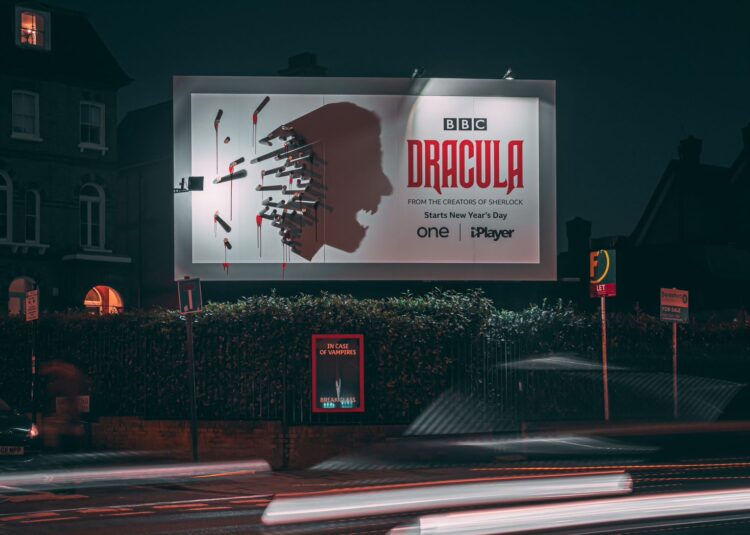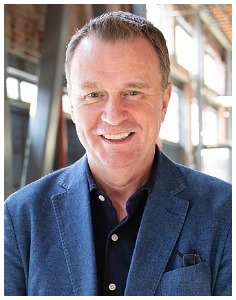Opinion
OOH has transformed into a high impact, tightly targeted, accountable way for brands to influence audience behaviour more effectively than the majority of alternative channels.
Advertising budgets continue to be scrutinised. Brands are making tough decisions on where to invest their time and money.
The pandemic accelerated the digital transformation of society. Marketers needed to reach audiences confined to their homes. Adspend shifted towards channels which could do this. Internet adspend grew 73.5% in 2021 to £23.5bn ($28.7bn) – a rise of 11.7% from 2019. TV and social media also spiked in popularity.
But now the world is open again. The channels which were dialled down through the pandemic are back. And better than ever.
The out-of-home (OOH) industry has evolved and now finds itself in a particularly robust position. Global outdoor ad spend is forecast to hit over $42bn in 2024 – up from $30bn in 2021.
So where does it live in an increasingly digital world? This was the ongoing topic at this year’s World Out of Home Organisation’s Toronto Congress which took place recently.
Billboard 2.0
OOH’s perceived lack of measurement has been a major problem historically.
Advertisers have expressed concerns about OOH’s conversion rate and available ROI data. But – just like the rest of society – OOH has accelerated its digital transformation over the last five years.
OOH’s ability to drive brand awareness is well known – it is a valuable trait. But demonstrating the recent developments will provide the medium with more credibility.
Addressing the congress, Talon took to the stage with our client Rohan Tambyrajah – CSO at PHD Global – and advocated for greater education: “As an industry, the story needs to be really tight. Don’t solely focus on the c-suite – talk from the CMO down to the junior marketing executives. Show these people your success.”
Advanced technology is making the medium more accountable, which is a primary reason for why the channel deserves a greater slice of the advertising pie. The OOH industry should showcase the advanced measurement options to provide a platform to track outcomes that clients care about:
- Sales Lift
- Online Conversion
- Brand Health
- Foot Traffic
OOH isn’t a passive medium anymore – it’s a real-time, connected digital channel. It has transformed into a high impact, tightly targeted, accountable way for brands to influence audience behaviour more effectively than alternative channels.
Its ability to reach audiences stretch way beyond the billboard. The amplification of campaigns through experiential and social media – with campaigns regularly going viral – provides a unique opportunity that no other environment can match.
The channel’s potential is evident. And brands are already starting to embrace the unique possibilities OOH offers.
A public gallery
Consumers returning to the streets has sparked OOH’s revival. And it has also sparked a new wave of creativity in how OOH and digital channels can interact and combine.
At the World Out of Home Conference, Tambyrajah outlined four macro forces brands should take into consideration when exploring OOH’s new opportunities: Shallow Living, Trust Dissolution, Engineered Serendipity and Purpose Pervasion. More detail on these can be found in PHD’s excellent book Shift | A Marketing Rethink.
Specsavers tapped into ‘purpose pervasion’ with its ‘Should’ve 2.0’, an update of the iconic ‘Should’ve gone to Specsavers’ campaign. This campaign ran across TV, radio, and made a massive impact through OOH. Bespoke billboards were installed vertically instead of horizontally in London and Leeds, cementing the campaign’s comedic angle. Showcasing the amplification potential of OOH, the campaign went viral – within hours of being posted organically by the public, images of the campaign picked up tens of thousands of likes and shares on social media.
The BBC Creative team similarly saw an opportunity to think outside the box. Their OOH campaign to advertise ‘Dracula’ involved poster installations, each adorned by multiple 3-D stakes. Again, this campaign not only made a massive impact on the streets, but a time-lapsed video of the build gained over seven million views on social media.
These case studies demonstrate the value OOH advertising can bring to the table. It’s not a siloed activity – it complements and enhances other channels. OOH’s ability to extend campaigns to social media is unparalleled.
So where does the OOH industry go from here?
Walking the marketing tightrope
OOH is emerging on the other side of its digital transformation as a central cog of the programmatic advertising wave. It can better predict and prevent the controversy digital channels sometimes attract.
New innovations are driving the industry in the right direction. Digital out-of-home (DOOH) has revitalised a traditional marketing tool, offering brands improved targeting and contextual advertising opportunities.
But greater accountability in the boardroom is the key to real progress. Rohan dived into the figures that really mattered: “Look at the $300bn spent on US advertising – OOH accounts for $8bn. The industry needs to develop a proposition to the market. Pictures of billboards aren’t going to attract buyers in meetings. You need to present tangible solutions – identify areas to invest money and explain why this will be effective.”
Developing marketing strategies is a balancing act. OOH’s improved targeting and provision of tangible, actionable data means it is competing on a level playing field – and can enhance a brand’s media strategy.
Stepping back outside
Contextual content made its value apparent throughout lockdown, but there is so much room for growth. OOH’s seemingly late digital transformation means it has learned from other behavioural targeting mediums. Now it is time to wake the industry up to its potential.
OOH’s renaissance – from legacy medium to effective, data driven and measurable channel – is unrivalled. Omnichannel participation remains a necessity. But it is industry education and ambition that will drive OOH to the next level.
Increased OOH investment shouldn’t come as a surprise. Rather, a result of the steps that have been taken to improve its viability and prove its effectiveness. Driving awareness of the new measurement capabilities will quickly see more advertisers looking out of their window for opportunities as we once again take to the great outdoors.
Barry Cupples is group CEO of Talon Outdoor.
Adwanted UK is the trusted delivery partner for three essential services which deliver accountability, standardisation, and audience data for the out-of-home industry.
Playout is Outsmart’s new system to centralise and standardise playout reporting data across all outdoor media owners in the UK.
SPACE is the industry’s comprehensive inventory database delivered through a collaboration between IPAO and Outsmart.
The RouteAPI is a SaaS solution which delivers the ooh industry’s audience data quickly and simply into clients’ systems.
Contact us for more information on SPACE, J-ET, Audiotrack or our data engines.





